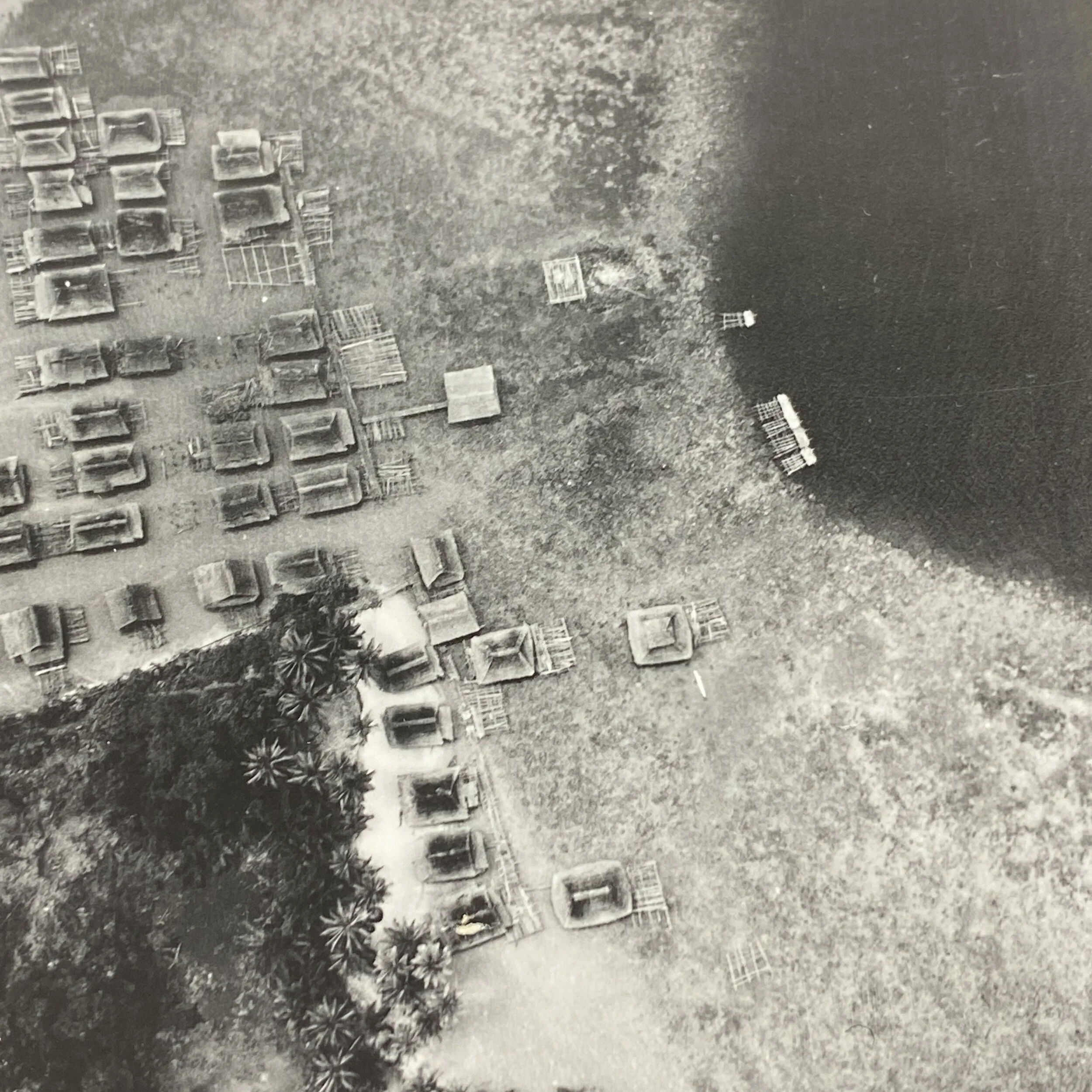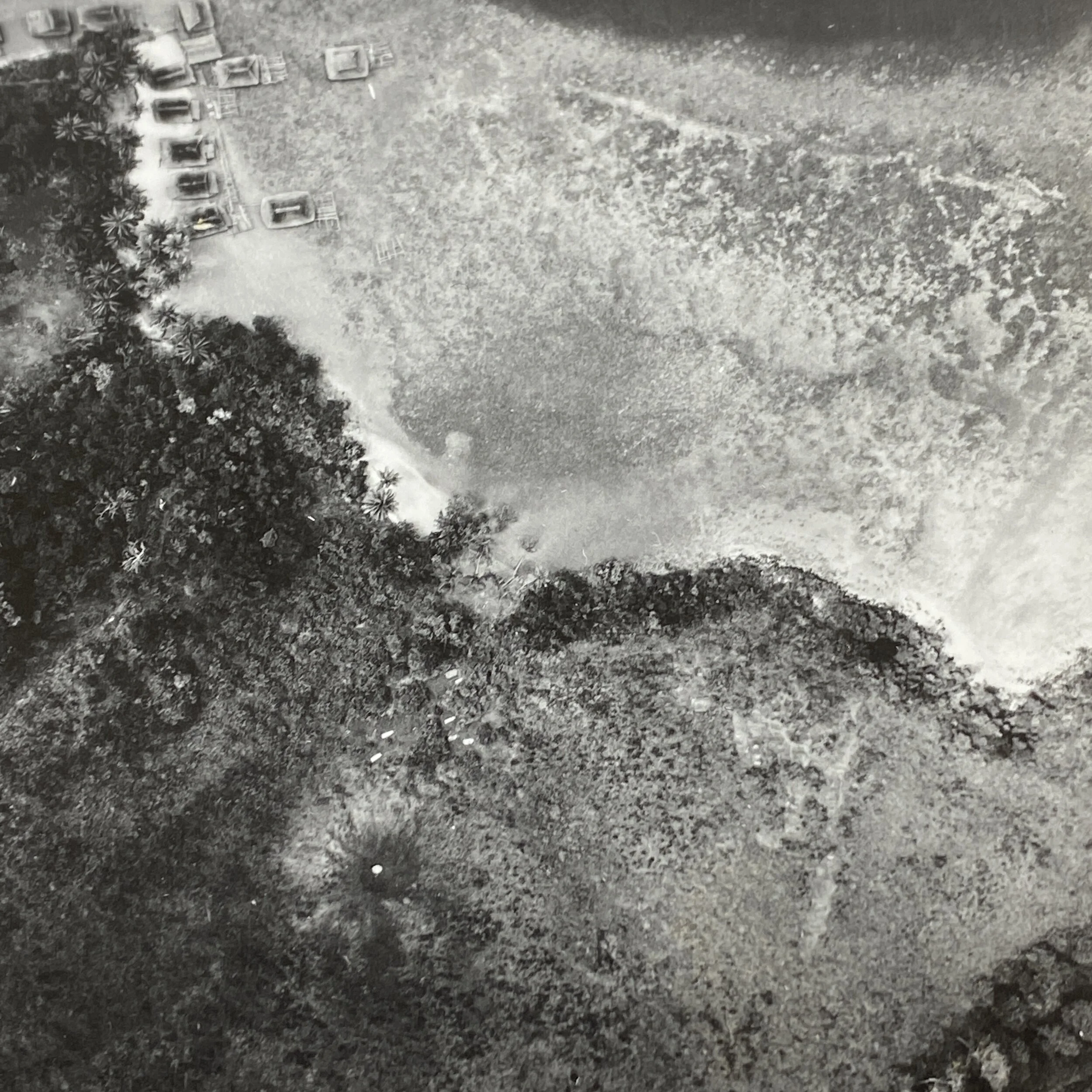D-Day April 1944 Dated - “Hollandia (Red Beaches)” - U.S.S. Enterprise CV-6 Aerial Reconnaissance Photograph New Guinea Campaign (Operation Reckless)












D-Day April 1944 Dated - “Hollandia (Red Beaches)” - U.S.S. Enterprise CV-6 Aerial Reconnaissance Photograph New Guinea Campaign (Operation Reckless)
Size: 7.5 x 7.5 inches
Letter of Authenticity included.
Dated April 21, 1944, this original ‘RESTRICTED’ World War II USS Enterprise aerial reconnaissance photograph is marked “Hollandia (Red Beaches)” and was taken by a U.S.S. Enterprise air group pilot and is also labeled with “CV6”. Taken with a K-17 aerial camera, the K-17 camera was originally designed as an all-purpose aerial camera and was used widely throughout World War II for vertical mapping, photography, and all types of aerial reconnaissance intelligence and bomb damage assessment.
Following the pilots combat mission in the area, and their safe landing aboard the deck of the USS Enterprise this photograph was then developed aboard the carrier’s photographic development crew and was marked, used, and examined by USS Enterprise pilots (such as Lt. Moore) and other USS Enterprise high ranking commanders and officers.
USS Enterprise and Hollandia:
5. Spring Activities, 1944
G5-1. On 7 March, ENTERPRISE headed once more for the Southwest Pacific where her planes provided air support, combat air patrol and anti-submarine patrol for the landings on Emirau. She then joined Task Force 58 and participated in strikes against Peleliu and Koror in the Palau Islands, Yap and Ulithi in the western Carolines and, as the group retired eastward, against Woleai.
G5-2. ENTERPRISE planes flew their first strikes against airfields and installations in Hollandia on 21 April in support of amphibious operations in Tanahmerah Bay. She remained in the area
The Battle of Hollandia (code-named Operation Reckless) was an engagement between Allies of World War II and Japanese forces during World War II. The majority of the Allied force was provided by the United States, with the bulk of two United States Army infantry divisions being committed on the ground. Air and naval support consisted largely of U.S. assets, although Australia also provided air support during preliminary operations and a naval bombardment force.
The battle took place between 22 April and 6 June 1944 and formed part of the New Guinea campaign. The operation consisted of two landings, one at Tanahmerah Bay and the other at Humboldt Bay, near Hollandia. The landings were undertaken simultaneously with the amphibious invasion of Aitape ("Operation Persecution") to the east. The battle was an unqualified success for the Allied forces, resulting in a withdrawal by the Japanese to a new strategic defense line in the west of New Guinea and the abandonment of all positions in the east of the island.
Red Beach:
Two landing zones were selected in the Hollandia area. One would be at Tanahmerah Bay on the west side of an outcropping of land formed by the Cyclops Mountains. Thought to be a lightly defended area, the 24th Infantry Division, a regular Army unit commanded by Maj. Gen. Frederick A. Irving, would storm ashore at two separate beaches, Red Beaches 1 and 2, and then drive inland on a well-established old Dutch road toward the airfields, which had been constructed on a strip of land sitting between the southern edge of the Cyclops Mountains and a large meandering body of water known as Lake Sentai.
Simultaneously, a landing was to be made at Humboldt Bay on the eastern side of the Cyclops Mountains outcropping. The 41st Infantry Division, National Guard troops commanded by Maj. Gen. Horace H. Fuller, would land at White Beaches 1 through 4. Thought to be more heavily defended, the strongest force would land on White Beaches 1 and 2 on a narrow strip of land about 21/2miles south of Hollandia town. Each beach was only about 700 yards long and 100 yards deep with a mangrove swamp directly behind. Another landing area, White Beach 3, was no better, situated on the tip of a finger of a peninsula separating large Humboldt Bay from small, hidden Jautefa Bay. On the northwestern shore of Jautefa Bay sat the small native village of Pim, which had a jetty and the start of a road leading to the eastern side of Lake Sentai. While most of the attackers would come ashore at White Beaches 1 and 2, a battalion of soldiers in LVT amphibious tractors and DUKW amphibious trucks would land at White Beach 3, rumble across the finger-like peninsula, splash into Jautefa Bay, and make a final landing near Pim at White Beach 4.
Throughout the month of March and into mid-April, MacArthur kept up the illusion that his next objective was Wewak, launching several aerial bombing runs and even a few naval bombardments. At the same time, Lt. Gen. George C. Kenney’s Fifth Air Force struck at the Hollandia airfields, wiping out almost all of the 350 defending Japanese planes. On April 20, the three invasion convoys, headed for Aitape, Tanahmerah Bay, and Humboldt Bay, rendezvoused near Manus Island. On the 21st, the ships bearing the invasion force for Aitape, code named Persecution Task Force, broke off and headed southeast toward their landing beaches. The rest of the ships, containing the invaders for Hollandia, code named Reckless Task Force, continued on. At 1:30 am on April 22, D-day, the remaining convoys split. The Central Attack Group carrying the 41st Division headed toward Humboldt Bay, while the Western Attack Group, with the 24th Division, went toward Tanahmerah Bay.
Comprehensive WWII combat history of USS Enterprise (CV-6):
The Yorktown class aircraft carrier, USS Enterprise (CV-6) was commissioned at Newport News, Virginia, on May 12, 1938. Relocating to the Pacific, she was at sea during the Japanese Attack on Pearl Harbor on December 7, 1941. Three days after, she became the first U.S. Navy warship to sink a Japanese warship, submarine I-70, and later that month participated in the Wake Island expedition. In April, Enterprise covered the Dootlittle Raid on Japan and participated in the Battle of Midway that June, where her planes helped sink three Japanese aircraft carriers and a cruiser. During the Guadalcanal Campaign, she covered the landings and participated in the battles of Eastern Solomons and Santa Cruz Islands. Despite being damaged in both battles, she launched aircraft to assist the ships involved in the Naval Battle of Guadalcanal. In late 1943 and early 1944, Enterprise took part in the Gilberts and Marshall invasions and air attacks on the Japanese in the Central and Southern Pacific. In the summer of 1944, she participated in the Marianas operation and the Battle of the Philippine Sea, followed with the largest naval battle in history, the Battle of Leyte Gulf in October.In February 1945, Enterprise took part in the Iwo Jima invasion, then raids on the Japanese home islands and the Okinawa campaign in April. Due to damage received by two kamikaze attacks in April and May, she returned to the United States with the distinction of being the most decorated U.S. Navy warship during the war. Following Japan's surrender, she helped transport U.S. servicemen back to the United States. Decommissioned in February 1947, Enterprise was re-designated (CVA-6) in October 1952 and then to (CVS-6) in August 1953. Despite efforts to turn her into a museum ship, she was sold for scrapping in July 1958